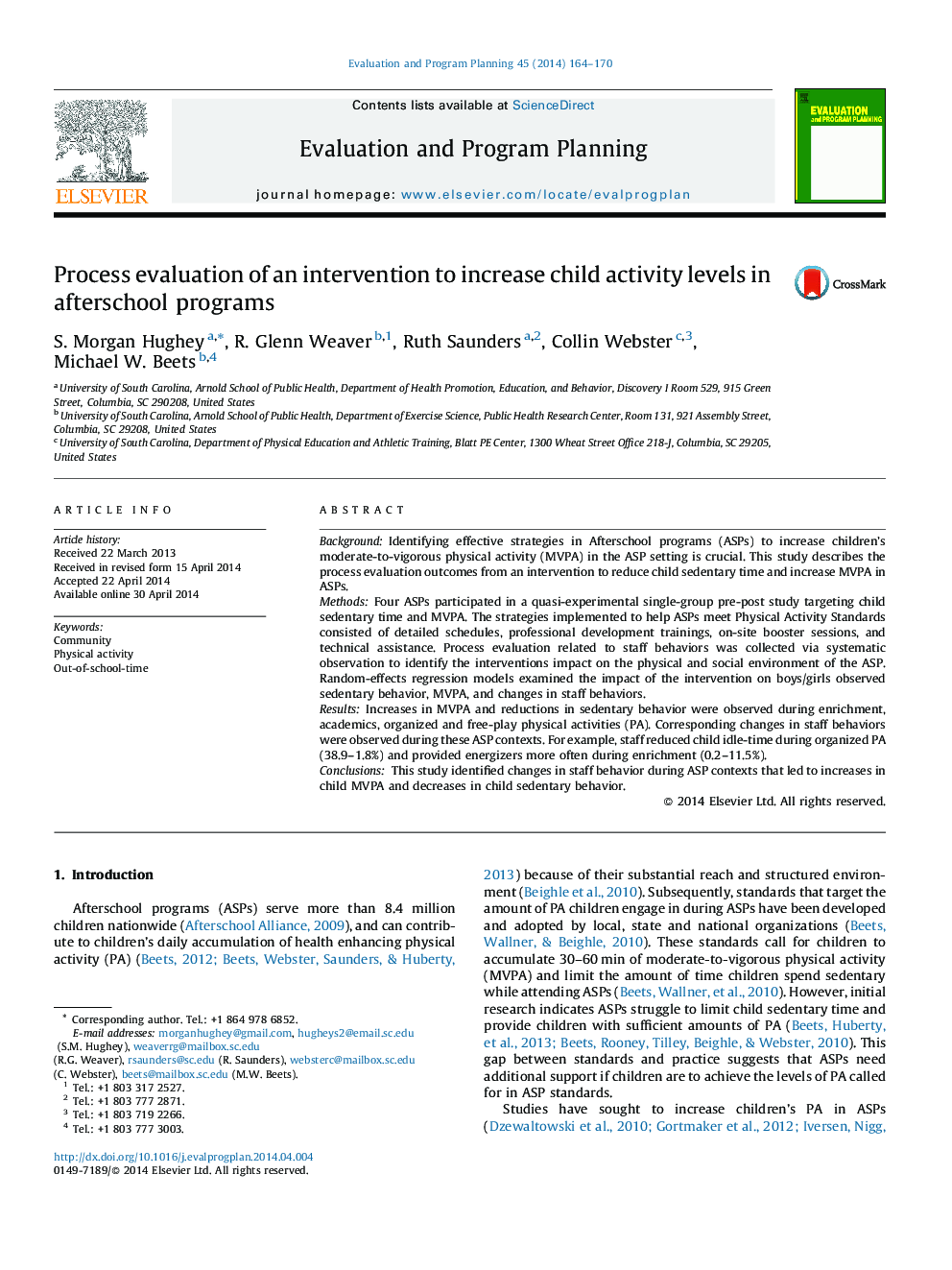| کد مقاله | کد نشریه | سال انتشار | مقاله انگلیسی | نسخه تمام متن |
|---|---|---|---|---|
| 322480 | 540063 | 2014 | 7 صفحه PDF | دانلود رایگان |
• Afterschool programs are one setting to address child activity levels.
• Strategies were low to no-cost for the afterschool organization.
• Further implementation may lead to sustainable increases in child activity levels.
• Systematic observation is an effective process measure.
• Changes in staff behaviors were observed during afterschool program time.
• Child activity levels increased where staff behavior changed.
BackgroundIdentifying effective strategies in Afterschool programs (ASPs) to increase children's moderate-to-vigorous physical activity (MVPA) in the ASP setting is crucial. This study describes the process evaluation outcomes from an intervention to reduce child sedentary time and increase MVPA in ASPs.MethodsFour ASPs participated in a quasi-experimental single-group pre-post study targeting child sedentary time and MVPA. The strategies implemented to help ASPs meet Physical Activity Standards consisted of detailed schedules, professional development trainings, on-site booster sessions, and technical assistance. Process evaluation related to staff behaviors was collected via systematic observation to identify the interventions impact on the physical and social environment of the ASP. Random-effects regression models examined the impact of the intervention on boys/girls observed sedentary behavior, MVPA, and changes in staff behaviors.ResultsIncreases in MVPA and reductions in sedentary behavior were observed during enrichment, academics, organized and free-play physical activities (PA). Corresponding changes in staff behaviors were observed during these ASP contexts. For example, staff reduced child idle-time during organized PA (38.9–1.8%) and provided energizers more often during enrichment (0.2–11.5%).ConclusionsThis study identified changes in staff behavior during ASP contexts that led to increases in child MVPA and decreases in child sedentary behavior.
Journal: Evaluation and Program Planning - Volume 45, August 2014, Pages 164–170
